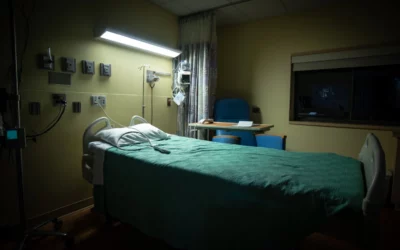can I get a brain injury in a low-impact collision?
Motor vehicle collisions can occur at varying speeds. Negligent drivers commonly claim that no injuries are possible in accidents that involve two vehicles traveling at relatively slow speeds. This misbelief is further promoted by insurance companies. But, the evidence shows that it is indeed very possible for people to suffer a wide range of injuries even in low-speed collisions, and all victims will want to seek the help of a Murray personal injury lawyer.
The effects of a traumatic brain injury (TBI) are not always readily apparent to most people, so it can be several weeks or months before a clear diagnosis occurs. But, it is important for all victims of low-speed accidents dealing with TBI symptoms to seek legal representation quickly. You may be entitled to many different kinds of financial compensation awards known as damages to cover the various costs you are now facing to care for your injury.
dangers of low-speed collisions
A National Library of Medicine study sought to review the dynamics of low-speed rear-end collisions resulting in little or no visible damage and decide whether occupant injury can occur. It concluded that there were usually no skid marks left in low-impact collisions and minor or no visible damage to vehicles. There was a lack of relationship between occupant injury, vehicle speed, and damage, and there did not seem to be an absolute speed or amount of damage a vehicle sustains for a person to experience injury. Although, crash tests indicated that a change of vehicle velocity of 2.5 miles per hour (mph) can produce occupant symptoms while vehicle damage did not occur until 8.7 mph.
Harvard Medical School once reported that a person sitting in a stationary vehicle struck by another vehicle going only 10 mph can be enough to put up to 9 Gs (gravitational force equivalent or g-force) of force on a person’s neck. Texas-based Advantage Healthcare Systems states that people can suffer TBIs in low-speed motor vehicle accidents.
WRAL-TV reported that hitting a level of 18 Gs can be enough to start causing human injury, and a passenger wearing a stretching-style seatbelt during a 30 mph crash can be exposed to 20 Gs. People with non-stretching seatbelts can be subject to 30 Gs. People without seatbelts can be subjected to about 150 Gs in a 30 mph crash.
possible tbi symptoms
It is possible for people who suffer TBIs to deal with entirely different symptoms, many of which can depend on the severity of a TBI. The United States Department of Health and Human Services states that symptoms of mild TBIs include:
- state of being dazed, confused, or disoriented
- loss of consciousness for a few seconds to minutes
- fatigue or drowsiness
- headaches
- confusion
- lightheadedness
- blurred vision
- difficulty sleeping
- tiredness or sleepiness
- dizziness or loss of balance
- changes in sleep habits
- ringing in the ears, or tinnitus
- bad taste in the mouth
- memory or concentration problems
- behavior or mood changes
- trouble with memory, concentration, attention, or thinking
- nausea or vomiting
- depression or anxiety
- sensitivity to light or sound
People who suffer moderate or severe TBIs can experience many of the same symptoms associated with mild TBI. As well as any one of the following other symptoms more common in moderate and severe cases:
- vision loss in one or both eyes
- loss of consciousness for a few minutes to hours
- headaches that get worse or do not go away
- dilation of one or both pupils in the eyes
- profound confusion
- slurred speech
- repeated vomiting or continued nausea
- clear fluids draining from the nose or ears
- weakness or numbness in fingers and toes
- inability to wake up from sleep
- numbness or tingling of arms or legs
- convulsions or seizures
- enlargement of the pupil of one or both eyes
- loss of coordination
- uncoordinated or “clumsy” movements
- increased confusion, restlessness, or agitation
The nearly 2 million Americans who suffer some kind of TBI every year have led to the injury being known as a silent epidemic. TBI is the leading cause of death and disability for people less than 45 years of age. TBI now occurs more often than breast cancer, acquired immunodeficiency syndrome (AIDS), multiple sclerosis, and spinal cord injury combined.
People in the United States suffer TBIs roughly every 15 seconds, and about 100,000 people will die from TBIs, while 500,000 are permanently disabled by them annually. There are approximately 5.3 million Americans, more than 2 percent of the American population, living with a disability resulting from a TBI.
importance of medical attention after a car accident
The one major issue with low-speed accidents concerns people not seeking medical treatment. It is far from uncommon for people who have been involved in low-speed collisions to think that the accidents were so minor and the damage so minuscule that there is nothing left to do beyond simply reporting the accident to the police and exchanging information with another driver.
The truth remains that every person involved in any kind of motor vehicle accident, low-speed, high-speed, or any speed anywhere in between, must be absolutely certain to obtain necessary medical attention quickly. In low-speed collisions, you will want to have a proper evaluation performed so you can be certain you did not suffer a severe injury of which you might not even be aware.
TBIs do not always produce immediate symptoms, so you can create difficulties for yourself when you are visiting a doctor about a TBI you suffered many weeks prior. Insurance companies often jump on any gaps in care because they will argue that other events between the dates of your accident and the date of initial treatment may have actually caused your injury.
When you do see a doctor about your car accident, even if it is low-speed, you know your condition has been properly evaluated, and any signs of brain injury will be addressed as soon as possible. All people need to keep in mind that many of the most common kinds of severe injury symptoms will not begin to appear until several weeks after an accident. Nobody should assume that they are fine just because they are not immediately displaying any injury symptoms in the moments following a collision.
Seeking medical attention at a local hospital or another care provider will be important in connecting any later symptoms to your original date of treatment when it occurred right after your accident. If you do not see a doctor, you can find yourself on your own for the costs of dealing with TBIs you only discover several months later.
dealing with insurance
Both drivers involved in a low-speed collision will hopefully have car insurance for their vehicles, and it is usually the insurance companies that then take responsibility for covering all of the damages arising from an accident, depending on who was at fault. Some low-speed collisions can involve serious disputes about liability because both drivers operating at lower speeds may be more inclined to believe they were not at fault.
Even when an insurer becomes aware that it will be the liable party in any car accident case, the insurance company still wants to pay as little as possible to resolve any injury claim. In many cases, an agent or adjuster for an insurance company will quickly reach out and contact a car accident victim to extend a settlement offer.
People need to understand that there is no risk in rejecting any such offer because it will not be the last settlement offer you will be dealing with when you are negotiating a better offer. You do not want to try and negotiate a settlement on your own. Many people have an alarming tendency to say things that ultimately harm their cases and you will be better served by having a skilled personal injury lawyer handling all conversations with insurers.
Low-speed car accidents typically have the potential to involve some lowball settlement offers from insurance companies. They are inclined to believe that collisions causing low amounts of physical damage to vehicles can cause serious injuries, but overcoming the presumption will again require the help of experienced legal counsel. When you have an attorney, they will know how to gather all of the relevant medical documentation in your case and present the evidence in the most favorable manner, so the court will allow you to recover complete damages for all costs.
call us to speak with an attorney
Did you or your loved one suffer a TBI in a lower-speed car accident caused by another driver’s negligence in Utah? Gosdis Law represents every client on a contingency fee basis, meaning that you do not pay us a single cent unless we win or settle your case.
Our firm understands that not all injury victims can come to our office, and we are more than willing to come to you in such cases, whether you are in a hospital or stuck at home. Call us today at (385) 429-9960 or contact us online to set up a free consultation with our Murray personal injury lawyer.




